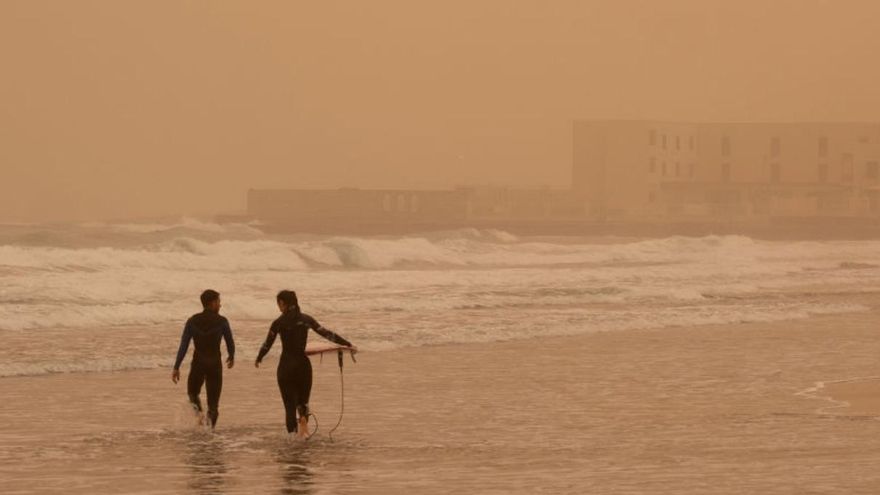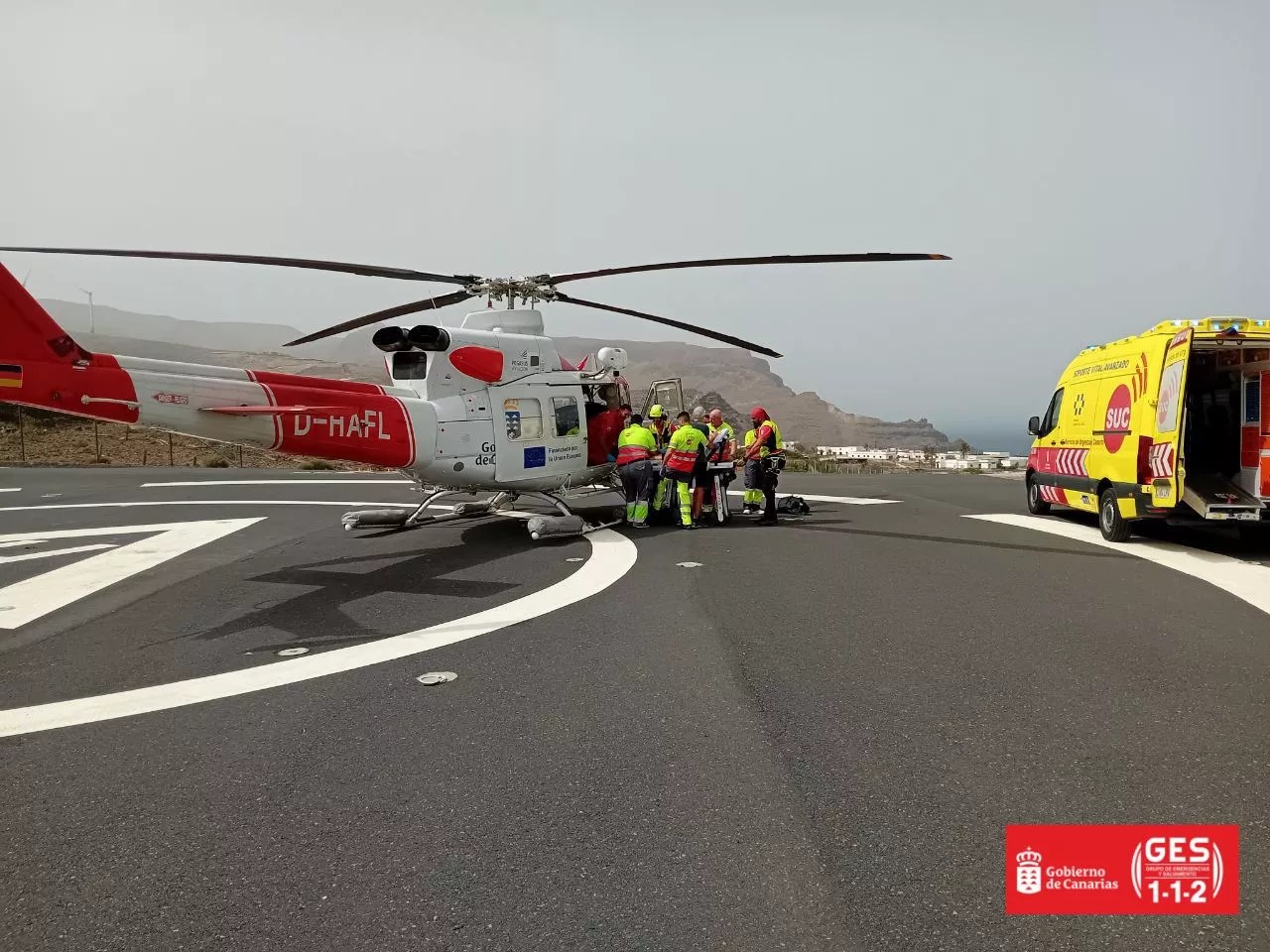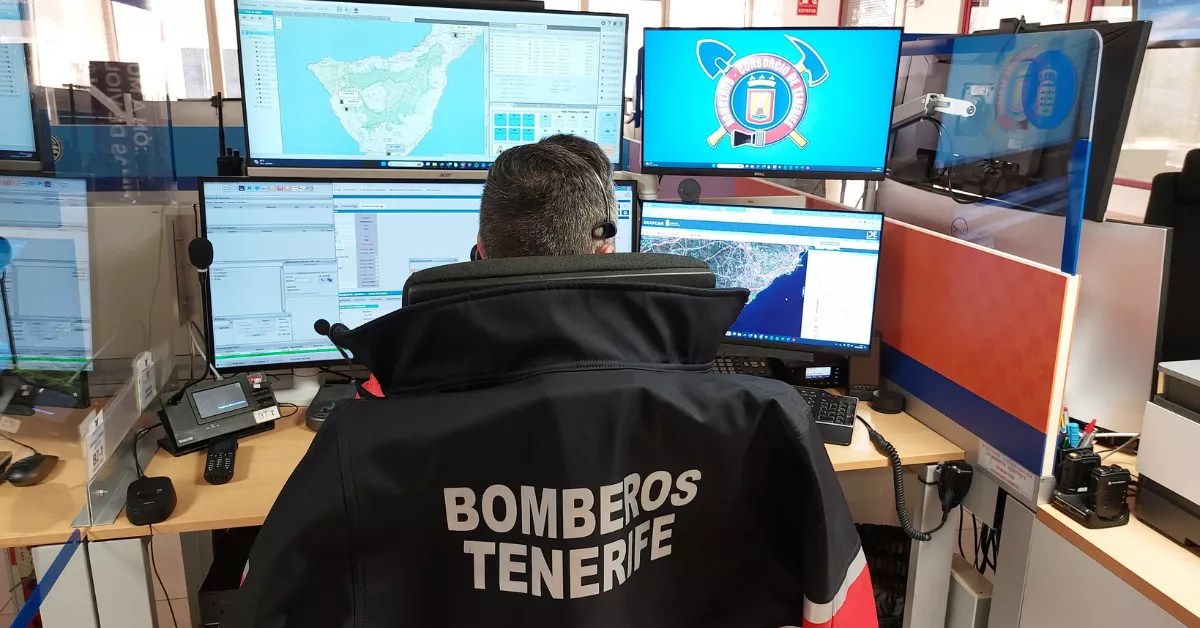
An anticyclone over the Peninsula and a weak storm southwest of the Canary Islands. These are the unusual ingredients that, during winter, can cause winds strong enough to carry large amounts of suspended dust to the Archipelago and the Peninsula. The strange supercalimas that tinted the skies and snow a reddish hue between 2020 and 2022 were the result of an atmospheric pattern never before seen – at least in the last 20 years of records. A disposition that also resembles the atmospheric configurations that had been predicted on a planet in turmoil due to climate change.
This is the conclusion reached by a study carried out by researchers in the Canary Islands and is currently under review in the journal Atmospheric Chemistry and Physics. The study is led by the scientist from the Institute of Natural Products and Agrobiology (IPNA-CSIC), Sergio Rodríguez, who reached this conclusion after reconstructing the data on concentrations of breathable particles, less than 10 microns (PM10) during the six supercalima episodes that have affected the Canary Islands and the Peninsula in those three unusual years.
The episodes that have been studied are those in which concentrations exceeded 1,000 micrograms per cubic meter of particles smaller than 10 microns (the so-called PM10): from February 3 to 5, 2020, from February 22 to 29, 2020 (popularly known as the carnival supercalima), from February 15 to 21, 2021; from January 14 to 17, 2022; from January 29 to February 1, 2022, and from March 14 to 20, 2022.
The study concludes that the origin of these extraordinary episodes lies in a peculiar winter battle between low and high-pressure systems located in unusual places for the season. An “anomalous” situation that is also corroborated by other studies that have tried to understand what has happened in the atmosphere in recent years to trigger extraordinary situations like these massive entries of suspended dust both to the Canary Islands and the European continent.
One of the reasons why supercalimas have become more frequent visitors to the Archipelago and Europe has been the displacement of the subtropical anticyclone of the North Atlantic. “During the months of January and February, from 2020 to this year 2024, it has shifted from being located south of the Azores to being positioned in the south of the Iberian Peninsula,” summarises Rodríguez.
“The study manages to reconstruct the data from six episodes of intense suspended dust.”
The study successfully reconstructs the data from six episodes of intense suspended dust
This sky battle is what has led to the supercalimas, such extraordinary events that in the Canary Islands there are no similar records in any year since 2005. “And in the records of Izaña, starting in 1987, there has also been no such amount of dust perceived as that registered during that carnival week in February 2020,” Rodríguez concludes.
“The concentrations of breathable particles PM10 during those days were so high that the measuring instruments saturated at 999 micrograms of suspended dust per cubic meter of air,” says the IPNA-CSIC researcher. This means that initially, the equipment would not have been able to accurately measure such high dust concentrations, so a new method had to be devised to thoroughly understand what happened during those days.
As a result of this issue, the researcher set out to create a data reconstruction method that, three years later, has made it possible to know exactly how much calima reached the Canary Islands and the Peninsula on those days when dust clouds engulfed everything in their path. “The concentrations are outrageously high,” Rodríguez states. This is how he has been able to establish, for example, that “between March 15 and 17, 2022, in Almería, hourly concentrations of nearly 6,000 micrograms per cubic meter were reached.”.
Meanwhile, in February 2020, in areas like Arinaga, in Gran Canaria, hourly averages reached 5254 micrograms per cubic meter, and a daily average of 1,840 micrograms per cubic meter in southern Tenerife, a value 40 times higher than the concentrations recommended by the World Health Organization (WHO), which is set at 45 micrograms per cubic meter daily.
Air Quality Laboratory
[–>
The Air Quality Laboratory of the Canary Islands will analyse the chemical composition of the calimas
[–>
To better monitor and understand these phenomena, the Canary Islands are establishing the first comprehensive chemical analysis observatory of calimas in Europe. The Government of the Canary Islands, through the Department of Ecological Transition and Energy, Fight against Climate Change and Territorial Planning, and the Institute of Natural Products and Agrobiology (IPNA-CSIC) have created the Air Quality Laboratory of the Canary Islands, a new and unique infrastructure that aims to “quantify the components of the particles” found in the air breathed by the Canarian population.
In this regard, one of the primordial objectives of this laboratory, which is already installing several stations in the islands, will be to quantify the origins of the different particles that make up air pollution in the Canary Islands. Establishing the contribution of each contaminant will, in turn, help determine where measures can be taken to reduce their contribution to worsening air quality.
[–>
This project is already setting up monitors in different parts of the islands. Especially in strategic locations such as southern Tenerife, Gran Canaria, and Fuerteventura, as well as some areas of Lanzarote and the northern islands. In the first phase of the network rollout, measuring equipment has been installed in La Graciosa, Puerto del Rosario (Fuerteventura), Las Palmas de Gran Canaria, and Santa Cruz de Tenerife. A second phase will include more monitors to complete the observation of this phenomenon so common in the Archipelago.
















